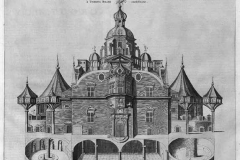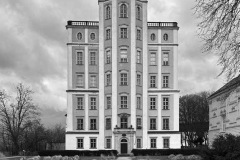Origo and Meridian
Architectural Additives of the Tycho Project
Text: Alexander Gyeres
Collecting materials for his Tycho Project, Alexander Gyenes has visited several European observatories from the Early Modern era. Some of the most remarkable solar observatories, in the form of functionalized meridian lines, were housed in cathedrals. The Tycho Project represents his attempt at creating a surface onto which cosmological themes dealing with space, the skies, heaven, and void can be projected. Gyenes calls this space the celestial interface.
Tycho Brahe (1546–1601) in developing methods, instrumentation, experiment based theories for terrestrial and celestial observations, was one of the pioneers of modern science. His ways of data collection and reduction, collaboration and publishing – made his daily praxis inspirational for those who came after.
The golden years of building meridianas started in the 15th century with the work of Toscanelli in Florence, and lasted well into the 18th, the most celebrated being Cassini’s heliometer at the San Petronio church in Bologna, a major center of learning in Europe, installed in 1655. By analyzing his observations, he was able to resolve in a satisfying manner the two major errors affecting Tycho’s instrumental data: the assumed values of the solar parallax, and the refraction arising from the Earth’s atmosphere. He also generated supporting evidence for Kepler’s 2nd law by measuring the decrease in the Sun’s diameter between the winter and summer solstices.





